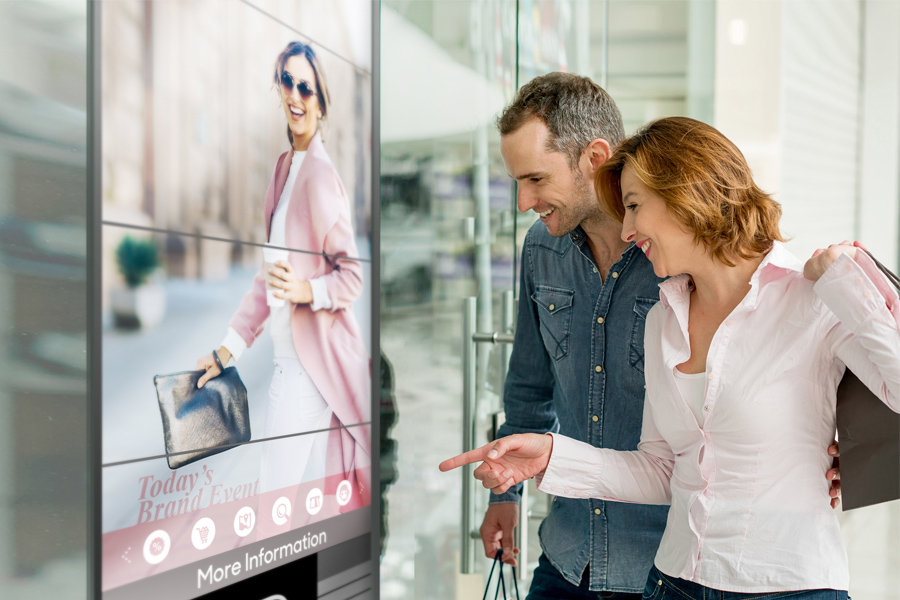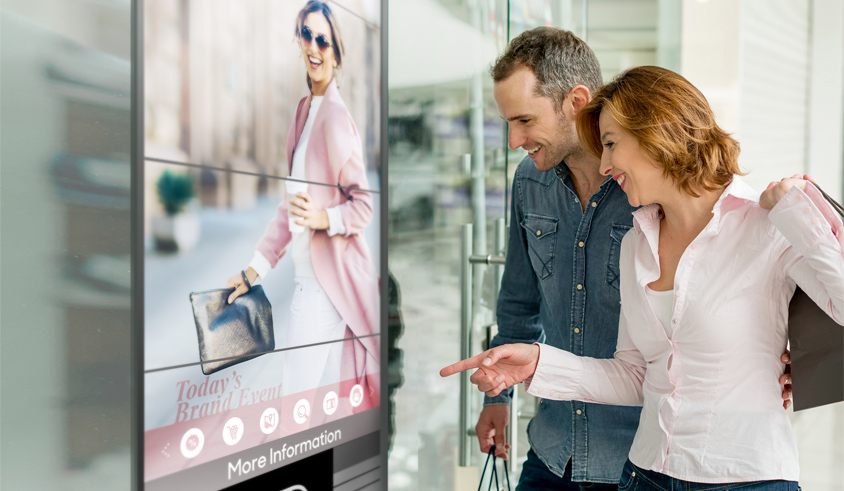Go beyond measuring retail store traffic with a data-driven customer feedback loop


The world is awash with data. Everywhere you look, people are collecting, sorting, and analyzing data to make informed decisions on their business strategies. Businesses that are dominating the digital space with effective e-commerce strategies are doing so by leveraging customer data. Time and again, brick-and-mortar retailers ask us how they can bring the same data-driven strategies to an offline distribution channel. Luckily, we have some experience in harnessing the power of data to work in your favor. Due to the rapid pace of advancements in retail technology, the digital experience can now be brought to the mall, shopping center, or any other model of traditional brick-and-mortar concepts.
If you are thinking about how you can make data work for your retail store(s), we suggest a staged approach. Of course, the natural starting point is the question: How do I measure my retail store traffic? I recommend taking a bit of a step back to make sure you’re seeing ‘the forest through the trees’ first. Then, once you have a big picture strategy you’d like to realize, implement this strategy on a local level first. Hopefully, you’ll be able to use your learnings from the initial implementation to scale the concept in a way that guarantees a rich feedback loop throughout your operations, wherever they may be. Sounds complicated? Well, it does not have to be. Let’s dig a little deeper for clarification.

Think Strategically
The first order of measuring retail store traffic is to take a strategic approach. Figure out exactly what you are trying to accomplish and why. Use a brief bulleted list to outline what you believe to be true regarding your retail success. Whether these underlying assumptions come from your natural business instincts, management theory, or deep industry expertise, it’s worthwhile to write these down. Since assumptions give you a launching pad to work from, they form the backbone of any strategy. Using these assumptions, develop a set of hypotheses you’d like to test out. As a data scientist might say, hopefully you’ll be able to use the data gathered to verify your hypotheses ‘beyond a reasonable doubt'!
From here, I suggest setting up S.M.A.R.T. goals: Specific, Measurable, Attainable, Realistic, and Time-based. Before the emergence of retail technology that allowed for traffic data gathering and analysis, retail strategies were essentially driven by guesswork. Retailers would simply conduct A/B tests, over and over and over, until they figured out what worked, what their customers liked, or what sold the most. While that strategy was effective, it was costly. By utilizing technology to measure your retail traffic, you are optimizing your in-store strategy to take out the guesswork. You are now creating a targeted in-store experience that allows you to engage with your customers in a more meaningful and impactful way.
Implement Locally
Once you have your strategic level overview down, it’s helpful to think about the in-store experience as sort of a testing ground – or ‘feedback loop’. Start with one or two pilot stores and work on closing all of the gaps in the loop by implementing interactive IoT technologies in areas of need. Some of these will be existing tech you have in your stores now - such as mobile phones, displays, or pinhole and security cameras. For a true closed loop, you may need to supplement the technology with more advanced elements such as beacons, interactive displays, and a robust analytics platform that delivers real-time actionable insights – thereby closing those data gaps in your feedback loop. Use tactical deployments of in-store retail technology to gather this data and with those data-driven insights, you will be able to captivate your customers like never before, sell with confidence, and attract new clientele. Literally, reinvent the customer experience.
What are the stages and elements of your customer feedback loop?
One critical step in creating a ‘pilot’ that provides meaningful, real-time insights is addressing high-impact areas of the in-store experience. Areas of maximum impact typically fall into two categories: Behavior Sensing and Digital Experience. In both categories, retailers can leverage a variety of different approaches to gather data (behavior sensing) and then leverage that data to digitally enhance in-store offerings (digital experience). Incorporating these elements into your retail pilot program will enable you to gather real-time data insights, enhance your in-store experience and contribute to omni-channel capabilities.
1. Behavioral Data: Looking to gather behavior data? For straight traffic numbers, set up cameras that count people as they walk in and out of your store. Analyze in-store traffic with these cameras to measure customer flow, customer engagement, promotional engagement, and other key metrics that will allow you to optimize your visual merchandising strategy.
2. Zone Targeting with Heat Maps: Get even more granular by using cameras that count people that walk through specific “zones” of your store. This is a great way to see which areas of your store people visit the most. Leverage a visual heatmap of your store to easily view which experiences are drawing the most attention. Even better, combine heatmap and zone analysis to optimize your product placement.
3. Facial Analysis: Facial analysis technology can identify age, gender, and even visitor sentiment information. All this data, when delivered in real-time, seamlessly guides the execution of targeted marketing campaigns that connect your store’s visitors with the right brands, at the right time, at the right place, for the right purpose.
4. Data Filtering: Filtering out extraneous data ensures that your analytics are accurate and actionable. Removing employees from foot traffic counts, for instance, is an important step to maximize data hygiene.
Scale the Experience
One of the greatest aspects of technology innovations is that they continuously evolve over time to become better and more accessible. Displays and IoT triggers are constantly improving and should be part of a scaling plan from a management perspective. Once a retailer has implemented a successful ‘data-driven’ feedback loop at one store, the natural progression would be to bring those same positive outcomes to other key stores.
◾ As with the initial pilot, take a well-considered approach that makes sense for your business to identify the stores you’d like to scale this to next. For instance, you might decide to start with your highest grossing stores in either one graphic market or with stores that are underperforming. There is no one size fits all here, but there are certainly efficiencies which can be gained by looking at implementation at scale.
◾ Give thought to the leadership that will lead the charge. To ensure success, identify a project team or committee in charge of scaling the initiative and maximizing its impact.
◾ From a management and strategy perspective, digital technology that allows your headquarters to have oversight into the distribution of content across divisions and stores ensures consistency of process and message throughout your operations.
◾ Prioritize systems and processes that enable real-time sharing of data analytics both at the store level with your feet on the ground and with corporate and regional management. When implemented properly, each bit of technology should seamlessly interact with others in the system as well as a central analytics engine that delivers an integrated dashboard with user-friendly reports detailing every piece of relevant data related to in-store marketing performance.
One Final Note
Consumers now demand interactive, engaging personalized in-store or pop-up experiences. As a modern retailer, your business must seamlessly tap into new and better data about your customer that allows your brand to tell your story in an engaging and insightful manner. Digital technology transforms your brick-and-mortar business into a continuous learning environment that will give you real-time insights into the behavior of your customers and the performance of your marketing initiatives. This type of dynamic environment allows you to get to know your customer on a deeper level and create a more meaningful shopping experience.
Implementing your digital customer experience strategy is just the first step in truly harnessing the power of the technology available. In our next article, we will look at ways to make your in-store data actionable. If you have any questions about the many different ways you can measure your retail traffic, please contact Samsung SDS here.
▶ The contents are protected by copyrights laws and the copyrights are owned by the creator.
▶ Re-use or reproduction as well as commercial use of the contents without prior consent is strictly prohibited.
- #Retail
- #Retail Store
- #Data-driven
- #Customer
- #Feedback
- #Behavior Sensing
- #Digital Experience
- #Digital customer experience
- #Strategy
- #SamsungSDS

Arnaud Cazaledes is the Head of Solution Business Operations for Samsung SDS America with proven expertise in Information and Communication Technologies (ICT).
- 3 steps to optimizing the car dealership showroom experience
- How to enhance modern dealership operations: Inventory, staffing, and showroom management
- Reducing costs with affordable and resourceful mPOS
- Improving the user experience with mPOS
- Mobile point-of-sale systems: How they streamline the user experience & maximize ROI
- Making inroads into QSR digital transformation